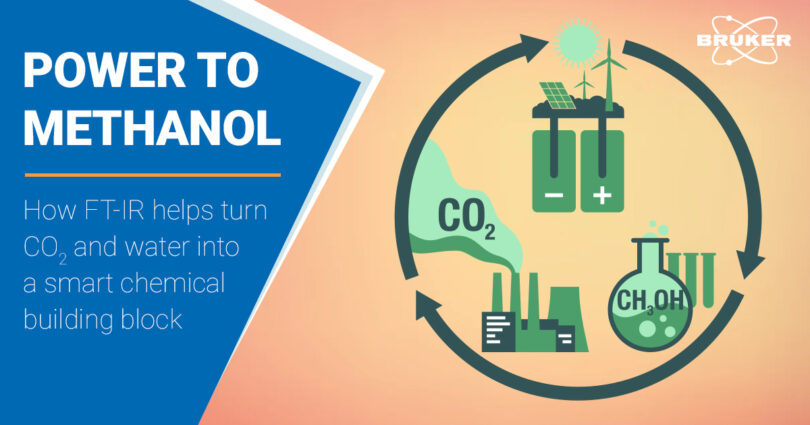In-Situ FT-IR Reaction Monitoring used for fundamental catalysts development
Greenhouse gases from human activities are the most significant driver of observed climate change since the mid-20th century. As greenhouse gas emissions from human activities increase, they build up in the atmosphere and warm the climate, leading to many other changes around the world – in the atmosphere, on land, and in the oceans. The major long-lived greenhouse gas carbon dioxide (CO2) is emitted primarily through the burning of fossil fuels (oil, natural gas and coal), solid waste and wood products.[1] Beside forest regrowth as a CO2 reducing activity, the recycling of carbon resources in industry is one of the most effective methods for resolving the energy and environmental crises. The released CO2 can be hydrogenated to form various products, which can then be used as fuels or raw chemical materials.
Methanol is one of those industrial products, which is mainly produced via Cu-based heterogeneous catalysis. Cu-based catalysts are usually composed of Cu, ZnO, and Al2O3. It is of great importance to understand the intrinsic roles and synergistic effects of these three components to improve the performance of Cu-based catalysts. Former research works revealed that, the active sites of Cu/ZnO/Al2O3 catalysts consisted of Cu steps decorated with Zn atoms.[2] When Zn atoms incorporate into the surface of Cu particles during the H2 reduction pretreatment, a ZnCu alloy formation can be considered.[3] It has been quantitatively proven that the methanol synthesis activity relates to Zn coverage on Cu/ZnO catalysts.[4] And more works and publications focused on the role of Cu and ZnO and the synergistic effects between them. Anyhow, the role of Al2O3 has rarely been addressed. As a structural promoter Al2O3 has an electron promotion effect for the defect properties and reducibility of ZnO and enhances the stability of Cu+.

In a recent project of the research group Chen et al. at Xiamen University in Fujian, China, Cu/ Al2O3 and Cu/ZnO powder crystals have been investigated using in-situ FT-IR reaction monitoring and other surface sensitive analysis techniques to further understand the promoting roles of Al2O3 and ZnO.[5] A Bruker VERTEX 70v FT-IR vacuum spectrometer with a home-made in-situ reaction cell was setup to monitor in real time the spectral changes of the catalysts surface, at room and elevated temperatures and under dosing of reaction gases (3H2 + CO2 <–> CH3OH + H2O). After receiving the highly sensitive in-situ FT-IR spectra, the formation of the key intermediate (bidentate carbonate and formate) and at the end the methoxy species on both catalysts could been quantitatively compared. Since CO2 is one the reactant gases, no atmospheric contribution in the laboratory air should appear in the FT-IR spectra in order to achieve reliable quantitative results. Therefore, Bruker vacuum FT-IR spectrometer is a must, in which the complete IR beam path is evacuated down to 0.2 mbar and no atmospheric disturbance will occur at all. Furthermore, vacuum spectrometers are not only the key success factor for in-situ reaction monitoring with atmospheric gases as educts or products, but also considerably higher system stability, spectral reproducibility over longer time and the detection sensitivity in all kinds of FT-IR experiments, acting as the trustworthy partner for research laboratories.








